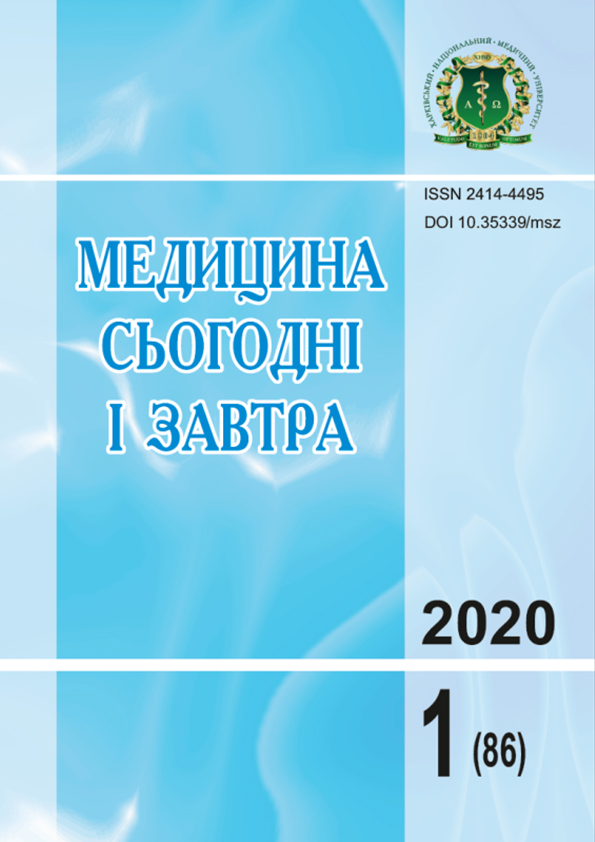Abstract
The results of treatment of overweight patients according to the ERAS-program are presented. We compared different intensive care protocols and proved that it is best to add colecalciferol and sodium D-fructose-l,6-diphosphate hydrate to the main protocol. An increase in the amount of secretory active adipose tissue in the body is accompanied by a decrease in the bioavailability of vitamin D, a decrease in the level of 25(OH)D in the blood increases the level of parathyroid honnone. This leads to secondary changes in calcium-phosphorus metabolism, which makes it impossible to meet the mandatory conditions of the ERAS-program. Among the most important of them is the motor regime, which makes it necessary to fulfill the conditions of physical activity by the patient for at least 8 hours out of bed with full self-care. It was found that the addition of a solution of colecalciferol and a solution of D-fructose-l,6-diphosphate sodium salt of hydrate to the main protocol of perioperative intensive care directly affects the effect of rapid recovery after elective surgery, the quality of motor activity of patients by restoring lost muscle function. This is due to improving the quality of muscle activity as a powerful energy-dependent process against the background of improving the body’s adaptation to exercise, which promotes faster recovery of the cardiovascular response (heart rate) motor activity for 8 hours daily postoperatively.
Keywords: overweight, intensive care, ERAS-program, colecalciferol, D-fructose-1,6-diphosphate, motor activity’, heart rate, prognosis.
References
Baumgartner, R. N., Koehler, К. М., Gallagher, D., Romero, L., Heymsfield, S. B., Ross, R. R., et al. (1998). Epidemiology of sarcopenia among the elderly in New Mexico. Am. J. Epidemiol., 147(8), 755-763. DOI: 10.1093/oxfordjoumals.aje.a009520. PMID: 9554417.
Gillis, C., Martin, L., Gill, M., Gilmour, L., Nelson, G., Gramlich, L. (2019). Food is medicine: a qualitative analysis of patient and institutional barriers to successful surgical nutrition practices in an enhanced recovery after surgery setting. Nutr. Clin. Pract., 34(4), 606-615. DOI: 10.1002/ nep.10215. PMID: 30430630.
Ariyoshi, N., Nogi, M., Ando, A., Watanabe, H., Umekawa, S. (2017). Cardiovascular consequences of hypophosphatemia. Panminerva Med., 59(3), 230-240. DOI: 10.23736/S0031-0808.17.03331-6. PMID: 28497938.
Christopoulou, E. C., Filippatos, T. D., Megapanou, E., Elisaf, M. S., Liamis, G. (2017). Phosphate imbalance in patients with heart failure. Heart Fail. Rev., 22(3), 349-356. DOI: 10.1007/ S10741-017-9615-6. PMID: 28432604.
Dzik, K. P., Kaczor, J. J. (2019). Mechanisms of vitamin D on skeletal muscle function: oxidative stress, energy metabolism and anabolic state. Eur. J. Appl. Physiol., 119(4, 825-839. DOI: 10.1007/s00421-019-04104-x. PMID: 30830277. PMCID: PMC6422984. 6. Scott, M. J., Baldini, G., Fearon, K. C., Feldheiser, A., Feldman, L.,S., Gan, T. J., et al. (2015). Enhanced Recovery After Surgery (ERAS) for gastrointestinal surgery, part 1: pathophysiological considerations. Acta Anaesthesiol. Scand., 59(10), 1212-1231. DOI: 10.1111/aas. 12601. PMID: 26346577. PMCID: PMC5049676.
Moningi, S., Patki, A., Padhy, N., Ramachandran G. (2019). Enhanced recovery after surgery: an anesthesiologist’s perspective. J. Anaesthesiol. Clin. Pharmacol., 35(l), 5-13. DOI: 10.4103/ joacp.JOACP_238_16. PMID: 31142953. PMCID: PMC6515715.
Kim, S. H., Kim ,W., Yang, S., Kwon, S., Choi, K. H. (2018). Influence of occupation on sarcopenia, sarcopenic obesity, and metabolic syndrome in men over 65 years of age. J. Occup. Environ. Med., 60(10, e512-e517. DOI: 10.1097/ЮМ.0000000000001412. PMID: 30059360.
Joyce, N. C., Oskarsson, B., Jin, L. W. (2012). Muscle biopsy evaluation in neuromuscular disorders.
Phys. Med. Rehabil. Clin. N. Am., 23(3, 609-631. DOI: 10.1016/j.pmr.2012.06.006. PMID: 22938878. PMCID: PMC4590778.
Marzetti, E., Calvani, R., Cesari, M., Buford, T. W., Lorenzi, M., Behnke, B. J., Leeuwenburgh, C. (2013). Mitochondrial dysfunction and sarcopenia of aging: from signaling pathways to clinical trials. Int. J. Biochem. Cell Biol., 45(10), 2288-2301. DOI: 10.1016/j.biocel.2013.06.024. PMID: 23845738. PMCID: PMC3759621.
Picard, M., McEwen, B. S., Epel, E. S., Sandi, C. (2018). An energetic view of stress: Focus on mitochondria. Front. Neuroendocrinal., 49, 72-85. DOI: 10.1016/j.yfme.2018.01.001. PMID: 29339091. PMCID: PMC5964020.
Gaignard, P, Liere, P., Therond, P., Schumacher, M., Slama, A., Guennoun, R. (2017). Role of sex hormones on brain mitochondrial function, with special reference to aging and neurodegenerative diseases. Front. Aging Neurosci., 7(9), 406. DOI: 10.3389/fnagi.2017.00406. PMID: 29270123. PMCID: PMC5725410.

